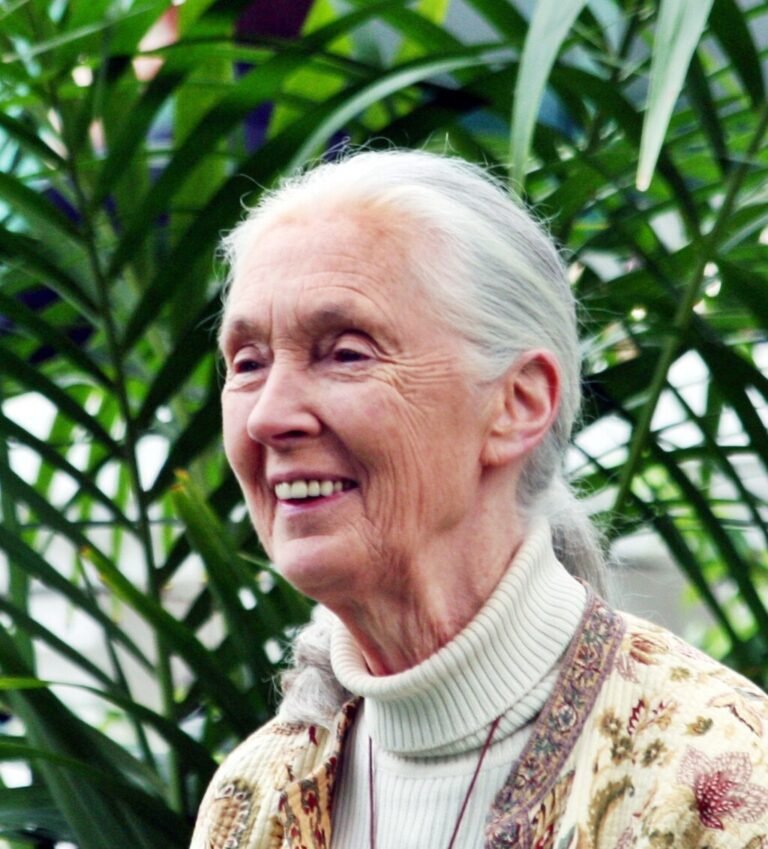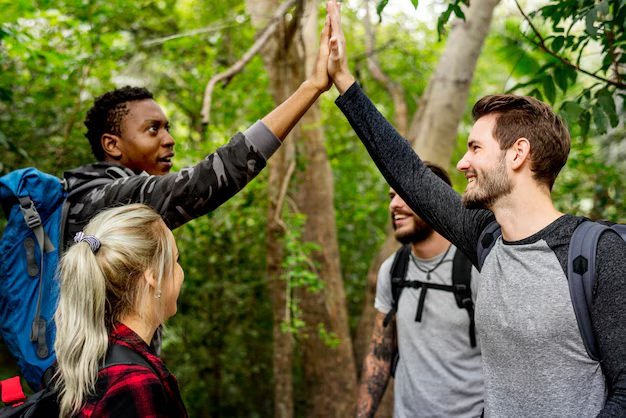Preservation Vs. Conservation: Environmental and Sustainability Differences
In 1730, in the village of Khejarli, India, a woman named Amrita Devi stood between a soldier’s axe and a sacred Khejri tree. Her act of defiance sparked a movement, leading to the sacrifice of 363 Bishnoi villagers who gave their lives to protect their forest. This early example of environmental activism highlights the profound human connection to nature and the lengths to which communities will go to preserve it.
Fast forward to today, and the tension between preserving untouched natural spaces and conserving resources for sustainable use remains a central environmental debate. While preservation seeks to protect nature from human interference, conservation aims to manage natural resources responsibly to meet human needs. Both approaches offer valuable insights into how we can coexist with the natural world.
In this article, we explore the philosophies of preservation and conservation, their differences, and how they can work together to protect our planet. Join us as we examine the paths to a sustainable future.”

In This Article
- What is Preservation?
- What is Conservation?
- Comparative Table: Preservation vs. Conservation
- Case Study: Yellowstone National Park
- The Ethical Debate: What Matters More?
- Ecological Research and Impacts
- Actionable Advice: What Can You Do?
- Conclusion: Not Either-Or, But Both-And
What is Preservation?
Preservation is about stepping back and allowing nature to exist without human interference. It’s the philosophy of protecting natural environments in their untouched state, free from development, resource extraction, and even recreational use when possible. The idea is to let ecosystems function as they have for millennia, without our fingerprints.
Marine biologist Dr. Sylvia Earle once said, “Preservation insists that the best way to care for nature is to leave it alone.” This approach recognises that some places are so unique, so vital, or so sacred that the best thing we can do is not interfere.
One of the most iconic examples of preservation in action is Denali National Park and Preserve in Alaska. Within its vast expanse lies the Denali Wilderness, a designated wilderness area encompassing approximately two million acres. Established in 1980 under the Alaska National Interest Lands Conservation Act (ANILCA), this area is managed to maintain its pristine character. There are no roads or permanent structures in much of this wilderness, and access is limited to minimise human impact.
The management of Denali’s wilderness areas reflects the core principles of preservation. According to the National Park Service, these lands are protected to maintain their cultural, aesthetic, and wilderness values, ensuring opportunities for inspiration, education, research, and solitude for present and future generations.
Preservation isn’t just about keeping people out; it’s about recognising the intrinsic value of nature. It’s about understanding that some ecosystems, once altered, can’t be restored. By preserving these areas, we ensure that future generations can experience the world as it once was—a world where nature thrives on its own terms.
In a time when human activity reaches every corner of the globe, preservation offers a way to protect the last truly wild places. It’s a commitment to humility, acknowledging that sometimes, the best action is inaction.
What is Conservation?
Conservation is about finding a balance between using nature’s resources and ensuring they’re still around for future generations. It’s not about locking everything away; it’s about using what we need, but doing it wisely and responsibly.
Gifford Pinchot, the first Chief of the U.S. Forest Service, emphasised that conservation involves the thoughtful and forward-looking use, protection, and renewal of natural resources such as forests, water, land, and minerals. He argued that it wasn’t about locking nature away, but about managing resources wisely so they could meet current needs without compromising future availability
A real-world example of conservation in action is the Tongass National Forest in Alaska. It’s the largest national forest in the U.S., and it’s managed under a plan that balances different land uses. Some areas are set aside for timber harvest, but under strict guidelines to protect the ecosystem. Other areas are preserved to maintain biodiversity and support wildlife.
The Tongass Land and Resource Management Plan divides the forest into various land use designations, similar to city zoning. This approach accommodates multiple uses across one land base to meet social, economic, and ecological needs..
The U.S. Environmental Protection Agency (EPA) also promotes sustainable resource management through programs like Sustainable Materials Management (SMM). SMM refers to a strategic method of maximising the efficient use and reuse of materials throughout all stages of their life cycles.
Conservation is about making choices that allow us to meet our current needs without compromising the ability of future generations to meet theirs. It’s a practical approach that recognises the interconnectedness of human and environmental health.
Comparative Table: Preservation vs. Conservation
| Feature | Preservation | Conservation |
|---|---|---|
| Core Philosophy | Protect nature by keeping it untouched and free from human interference. | Manage and use natural resources responsibly to ensure long-term sustainability. |
| Human Activity | Largely prohibited; minimal to no human impact is allowed. | Permitted but regulated; activities are managed to prevent overuse or harm. |
| Primary Focus | Value nature for its own sake, regardless of human benefit. | Balance human needs with environmental health, ensuring resources are available for future generations. |
| Typical Locations | National parks, wilderness areas, and other protected lands with limited access. | Forests, rivers, agricultural zones, and other areas where sustainable use is practiced. |
| Key Proponents | John Muir, Ansel Adams | Gifford Pinchot, Theodore Roosevelt |
Learn More: How Does Hunting Support Conservation Efforts?
Case Study: Yellowstone National Park
Preservation and Conservation in One Place
Yellowstone National Park beautifully illustrates how preservation and conservation can coexist. Established in 1872, it’s the first national park in the U.S. and a place where nature is both protected and shared responsibly.
In certain areas of Yellowstone, strict preservation policies keep ecosystems untouched, allowing wildlife and natural processes to thrive without human interference. These zones serve as vital refuges for biodiversity, especially as climate change alters habitats.
Conversely, other parts of the park embrace conservation principles. Here, controlled tourism, research, and infrastructure support both environmental sustainability and public enjoyment. This balanced approach ensures that visitors can experience Yellowstone’s wonders while contributing to its upkeep.
According to a 2024 news release by the National Park Service, in 2023, Yellowstone welcomed 4.5 million visitors who spent $623 million in nearby communities, supporting 8,560 jobs and contributing a total of $828 million to the local economy. This economic boost shows the importance of conservation efforts that allow for sustainable human engagement with natural spaces.
At the same time, areas with strict preservation policies have shown greater resilience to climate-related stresses. By limiting human activity, these regions maintain ecological integrity, which is crucial for adapting to environmental changes.
The Ethical Debate: What Matters More?
The ethical debate between preservation and conservation often hinges on how we perceive our relationship with nature. Preservationists argue that nature has intrinsic value and deserves protection for its own sake. Conservationists, on the other hand, emphasise sustainable use, viewing humans as integral parts of the ecosystem.
This philosophical divide is exemplified by the Lummi Nation’s deep connection to salmon. For the Lummi, salmon are not just resources but relatives. Their First Salmon Ceremony honours this bond, reflecting a worldview where humans and nature are interconnected. As Lummi culture educator Doralee Sanchez states, “We are salmon people, and we will always be salmon people”.
However, modern challenges threaten this relationship. Climate change, habitat destruction, and overfishing have led to a significant decline in salmon populations. The Lummi have observed warmer waters and fewer salmon returning to Puget Sound, impacting both their culture and livelihood.
This situation shows that it is important to integrate ethical considerations into environmental decision-making. Recognising the intrinsic value of nature, as well as our dependence on it, can guide more holistic and sustainable practices.
Ecological Research and Impacts
Research by scientists is increasingly showing the importance of both preservation and conservation in maintaining biodiversity and supporting communities.
A comprehensive meta-analysis published in Science in April 2024 revealed that conservation actions—such as establishing protected areas, managing invasive species, and restoring habitats—improved biodiversity outcomes or slowed its decline in 66% of cases compared to inaction. These interventions were particularly effective when well-resourced and properly managed.
In sub-Saharan Africa, conservation-oriented agroforestry practices have demonstrated significant benefits. A meta-analysis in Agronomy for Sustainable Development found that agroforestry systems reduced soil erosion by up to ten times compared to conventional methods, highlighting their role in land restoration and sustainable agriculture.
These findings emphasise that combining preservation and conservation strategies can lead to robust biodiversity protection while also delivering tangible benefits to human communities. By safeguarding ecosystems and promoting sustainable land use, we can ensure a healthier planet for future generations.
Actionable Advice: What Can You Do?
1. Support Land Preservation
Consider donating to organisations that protect natural spaces. The National Park Foundation and the Trust for Public Land work to conserve parks and public lands. Even modest contributions help maintain trails, protect wildlife habitats, and ensure these areas remain accessible for future generations.
2. Embrace Sustainable Living
Adopt habits that reduce your environmental footprint. Simple changes like using water-efficient fixtures, recycling, and choosing products made from sustainably harvested wood can collectively have a substantial impact. For instance, selecting furniture certified by the Forest Stewardship Council ensures responsible forestry practices.
3. Educate Yourself and Others
Understanding environmental issues empowers you to make informed decisions. Resources like Earth.org offer insights into how local actions can influence global outcomes. Sharing this knowledge with friends and family can amplify your impact.
4. Advocate for Sustainable Policies
Your voice matters. Engage with local representatives to support policies that promote environmental sustainability. This could involve attending town hall meetings, signing petitions, or participating in community discussions. Taking part in these efforts helps influence decisions that lead to a more environmentally responsible future.
5. Volunteer Locally
Get involved in community conservation efforts. Many organisations host events like tree planting, river cleanups, and habitat restoration projects. For example, Living Lands & Waters organises river cleanups across the U.S., welcoming volunteers to help preserve waterways.
Learn More: Conservation Vs. Sustainability: What Is the Difference?
Conclusion: Not Either-Or, But Both-And
The preservation vs conservation debate is not about choosing sides. It’s about understanding how both philosophies serve different but complementary roles in protecting our planet. Just like the redwoods in Muir Woods taught me years ago, sometimes the best action is standing still—and other times, it’s planting a seed.
Our future depends on embracing both paths: preserving the irreplaceable and conserving the rest with wisdom.







